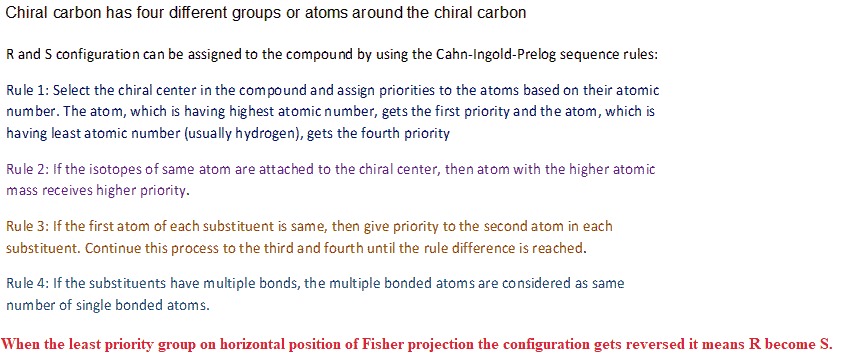6. Shown below is the Fisher projection of (R)-2-bromo-(S)-3-chlorobutane. Draw the mirror image of this stereoisomer and assign the R/S configurations of each chiral carbons for both isomers. H CH3 CH3 H H -Br -CI mirror plane 7. Make models of both stereoisomers in question 6. Test the models for superimposability. Secure the initials of your TA after showing them your physical model of (R)-2-bromo-(S)-3-chlorobutane. initials 8. In the space below draw Fisher projections of the two stereoisomers of 2- bromo-3-chlorobutane which are diastereomers of the stereoisomers shown in question 6. Take one of the models constructed for question 7 and switch two groups around one of the chiral carbons. Is this model represented by one of the Fisher projections you drew below? Indicate R and S for all asymmetric centers.
6. Shown below is the Fisher projection of (R)-2-bromo-(S)-3-chlorobutane. Draw the mirror image of this stereoisomer and assign the R/S configurations of each chiral carbons for both isomers. H CH3 CH3 H H -Br -CI mirror plane 7. Make models of both stereoisomers in question 6. Test the models for superimposability. Secure the initials of your TA after showing them your physical model of (R)-2-bromo-(S)-3-chlorobutane. initials 8. In the space below draw Fisher projections of the two stereoisomers of 2- bromo-3-chlorobutane which are diastereomers of the stereoisomers shown in question 6. Take one of the models constructed for question 7 and switch two groups around one of the chiral carbons. Is this model represented by one of the Fisher projections you drew below? Indicate R and S for all asymmetric centers.
Chemistry
10th Edition
ISBN:9781305957404
Author:Steven S. Zumdahl, Susan A. Zumdahl, Donald J. DeCoste
Publisher:Steven S. Zumdahl, Susan A. Zumdahl, Donald J. DeCoste
Chapter1: Chemical Foundations
Section: Chapter Questions
Problem 1RQ: Define and explain the differences between the following terms. a. law and theory b. theory and...
Related questions
Question
Please answer questions 6, 7, and 8. They are all related to each other. Please write neatly, answer and label all parts, and circle answers.

Transcribed Image Text:Now switch any pair of groups around the
chiral carbon of the "switched" model again! Compare the "double-switched"
model with the other unmodified S molecule from 4. Are they enantiomers or
are they identical?
6.
Shown below is the Fisher projection of (R)-2-bromo-(S)-3-chlorobutane.
Draw the mirror image of this stereoisomer and assign the R/S configurations of
each chiral carbons for both isomers.
CH3
CH3
8.
H
H
Br
-CI
mirror plane
7. Make models of both stereoisomers in question 6. Test the models for
superimposability. Secure the initials of your TA after showing them your
physical model of (R)-2-bromo-(S)-3-chlorobutane.
initials
In the space below draw Fisher projections of the two stereoisomers of 2-
bromo-3-chlorobutane which are diastereomers of the stereoisomers shown in
question 6. Take one of the models constructed for question 7 and switch two
groups around one of the chiral carbons. Is this model represented by one of the
Fisher projections you drew below? Indicate R and S for all asymmetric centers.
8
Expert Solution
Step 1

Trending now
This is a popular solution!
Step by step
Solved in 6 steps with 6 images

Knowledge Booster
Learn more about
Need a deep-dive on the concept behind this application? Look no further. Learn more about this topic, chemistry and related others by exploring similar questions and additional content below.Recommended textbooks for you

Chemistry
Chemistry
ISBN:
9781305957404
Author:
Steven S. Zumdahl, Susan A. Zumdahl, Donald J. DeCoste
Publisher:
Cengage Learning

Chemistry
Chemistry
ISBN:
9781259911156
Author:
Raymond Chang Dr., Jason Overby Professor
Publisher:
McGraw-Hill Education

Principles of Instrumental Analysis
Chemistry
ISBN:
9781305577213
Author:
Douglas A. Skoog, F. James Holler, Stanley R. Crouch
Publisher:
Cengage Learning

Chemistry
Chemistry
ISBN:
9781305957404
Author:
Steven S. Zumdahl, Susan A. Zumdahl, Donald J. DeCoste
Publisher:
Cengage Learning

Chemistry
Chemistry
ISBN:
9781259911156
Author:
Raymond Chang Dr., Jason Overby Professor
Publisher:
McGraw-Hill Education

Principles of Instrumental Analysis
Chemistry
ISBN:
9781305577213
Author:
Douglas A. Skoog, F. James Holler, Stanley R. Crouch
Publisher:
Cengage Learning

Organic Chemistry
Chemistry
ISBN:
9780078021558
Author:
Janice Gorzynski Smith Dr.
Publisher:
McGraw-Hill Education

Chemistry: Principles and Reactions
Chemistry
ISBN:
9781305079373
Author:
William L. Masterton, Cecile N. Hurley
Publisher:
Cengage Learning

Elementary Principles of Chemical Processes, Bind…
Chemistry
ISBN:
9781118431221
Author:
Richard M. Felder, Ronald W. Rousseau, Lisa G. Bullard
Publisher:
WILEY